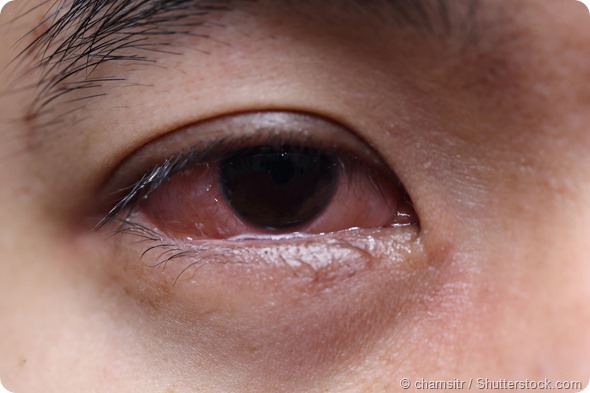How to buy diclofenac gel online no prescription
Ocular allergies are found in about a fifth of the American population. Symptoms of eye allergy range from mild itching and redness, to sight-threatening corneal ulcerations. It may involve the conjunctiva (conjunctivitis), the cornea (keratoconjunctivitis), or the eyelids (blepharitis). The latter may occur alone or with conjunctival involvement (blepharoconjunctivitis).

The most common symptoms of eye allergies involve all or some of these, as follows.
Group 1
Seasonal and perennial allergic conjunctivitis
These are typical allergic reactions, mediated by Immunoglobulin E (IgE), caused by airborne antigens, such as pollen and dander. The seasonal variety is characterized by waxing and waning of symptoms, which are usually self-limiting. These acute or subacute symptoms are likely to become continuous during the hay fever season due to repeated antigen exposure. Both eyes are characteristically affected.
The primary symptom of seasonal allergic conjunctivitis is severe itching of the eyes. Associated symptoms include:
- Redness
- Chemosis
- Eyelid swelling
- A clear discharge due to excessive tear production
- Mucous discharge
- A burning sensation
- Dark circles under the eyes, known as allergic shiners
- Photophobia
- The itching may cause repeated rubbing of the eyes with resultant introduction of infection.
On examination, the eyelid conjunctiva shows a rough swollen appearance due to papillary tarsal hypertrophy.
The perennial form of allergic conjunctivitis presents with milder, but more chronic non-specific symptoms of itching, along with redness and burning, and a swollen conjunctiva. Each episode may last for several months. Many patients complain of eye dryness. The persistent itching, even if not prominent, may be distressing for the patient. Along with the eye symptoms, rhinitis may be a chronic feature, either seasonal or constant in nature. Some patients have asthma.
Group 2
Vernal keratoconjunctivitis
This is rarer and more serious than the seasonal eye allergies. It occurs mostly in young boys, and wears off around puberty. However, it is able to cause corneal damage. About 75% of patients also have either eczema or asthma. Symptoms include:
- Intense itching
- Tearing of the eyes
- The production of ropy mucus
- The feeling that there is something in the eye
- Photophobia
Examination reveals red eyes with swollen eyelids. Large eosinophilic papillae are present on the upper lid conjunctiva.
Atopic keratoconjunctivitis
This affects older patients, and more males are affected than females. They usually have a history of atopy – eczema, asthma or allergic rhinitis. It is part of a systemic derangement of immune response and occurs all year round. It can cause corneal ulceration and permanent damage.
Its symptoms include:
- Severe itching
- Redness of the eyes
- Burning sensation of the eyes
- Photophobia
- Vision may be foggy
- Mucous discharge so thick as to gum together the eyelids during sleep
- The patients usually have atopic eczema of the face or eyelids
Examination shows erythema and edema of the eyelids, which often show cracks and loss of eyelashes. The tarsal plate conjunctiva shows papillary hypertrophy.
Group 3
Contact allergic dermatitis
Often seen in contact lens users, it may result from micro-traumas produced by the lenses. In other cases, it is caused by the presence of antigens formed by the combination of hapten proteins from the tear film with the lens material, provoking an immune reaction. The typical symptoms include:
- A feeling of grit in the eye
- Discomfort upon putting in the lens
- Redness of the eyes
- Itching and tearing of the eyes
- Mild mucous discharge from the eyes
- Mild edema of the lids
Giant papillary conjunctivitis
This form of contact allergic conjunctivitis is characterized by the formation of vesicles or papules on the inner surface of the upper lid. This is accompanied by:
- Puffiness of the eye
- Itching
- Excessive production of mucus and tears
- A foreign body sensation
- Vision may be blurred
Diagnosis
Diagnosis of ocular allergy is based on:
- a careful history of past illnesses
- a family history of atopy and allergic diseases
- contact with toxic or allergenic substances.
A detailed examination of the eye is often enough to confirm the diagnosis. Further tests may be ordered if required. These may include:
- Bacterial and viral specimens to rule out infection. Specimens taken by brush cytology may show the typical changes of infection by various specific microbes, such as the type of inflammatory infiltrate. For example, a massive eosinophilic infiltrate is characteristic of ocular allergy, where eosinophils are activated to maintain the inflammation.
- IgE in tear fluid shows how much of the antibody is present.
- Skin prick tests and specific serum IgE tests are helpful in doubtful cases of ocular allergy when a systemic search for other allergies is negative. IgE levels are markedly raised in atopic keratoconjunctivitis and skin prick tests are positive for multiple allergens.
- With allergic blepharitis, the use of an epi-cutaneous skin test is required, using the suspected contact eye drops or other suspected substances.
- An ophthalmic challenge test is useful when the diagnosis is still in doubt or when the treatment of choice is immunotherapy.
References
- http://acaai.org/allergies/types/eye-allergies#section-2
- http://www.ncbi.nlm.nih.gov/pmc/articles/PMC3047907/
- http://www.ncbi.nlm.nih.gov/pubmed/21913203
Further Reading
- All Eye Content
- How Does the Eye Work?
- Types of Eye Allergy
- Managing and Treating Eye Allergies
- Genetics of Eye Color
Last Updated: Feb 26, 2019

Written by
Dr. Liji Thomas
Dr. Liji Thomas is an OB-GYN, who graduated from the Government Medical College, University of Calicut, Kerala, in 2001. Liji practiced as a full-time consultant in obstetrics/gynecology in a private hospital for a few years following her graduation. She has counseled hundreds of patients facing issues from pregnancy-related problems and infertility, and has been in charge of over 2,000 deliveries, striving always to achieve a normal delivery rather than operative.
Source: Read Full Article
